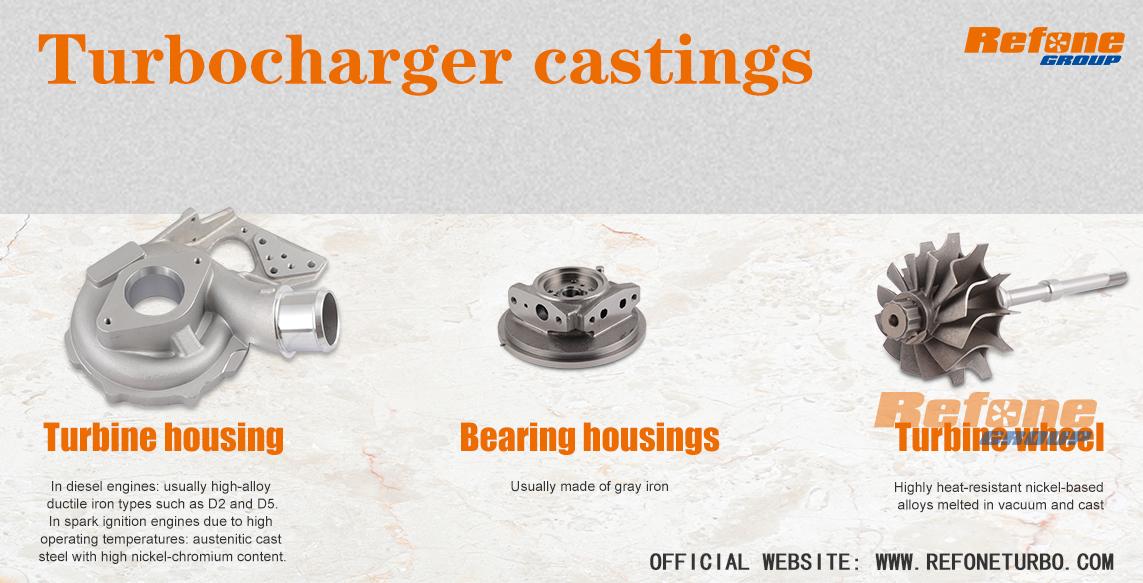Turbocharger castings for high performance engines require materials that are compatible with the behavior of the components, especially when there is a need to reduce exhaust emissions and improve engine performance. As product size and performance capabilities increase, so do the demands on these highly stressed castings.
A turbocharger basically consists of two main components.
The turbine wheel in the turbine housing draws energy from the exhaust gas and transmits it mechanically to the compressor via a drive shaft. The turbine wheel can reach speeds of 160,000 to 300,000 per minute. In a spark ignition engine, the turbine housing must withstand discharge gas temperatures up to 1050°C. Turbine wheel, bypass dampers and heat shields(turbo blanket) also reach correspondingly high temperatures. The heat shield prevents heat from penetrating into the bearing housing. Typically, after shutting down the engine, the bearing box can be cooled by water cooling to prevent harmful heating. In this casting, the confined space contains a total of four different media:
In the foundry industry, three parts of the " exhaust gas turbocharger " assembly are mainly cast:
In diesel engines: usually high-alloy ductile iron types such as D2 and D5.
In spark ignition engines due to high operating temperatures: austenitic cast steel with high nickel-chromium content.
Usually made of gray iron
Highly heat-resistant nickel-based alloys melted in vacuum and cast

 Online Service
Online Service +86 551 65617152
+86 551 65617152 info@refoneturbo.com
info@refoneturbo.com +8618133658728
+8618133658728